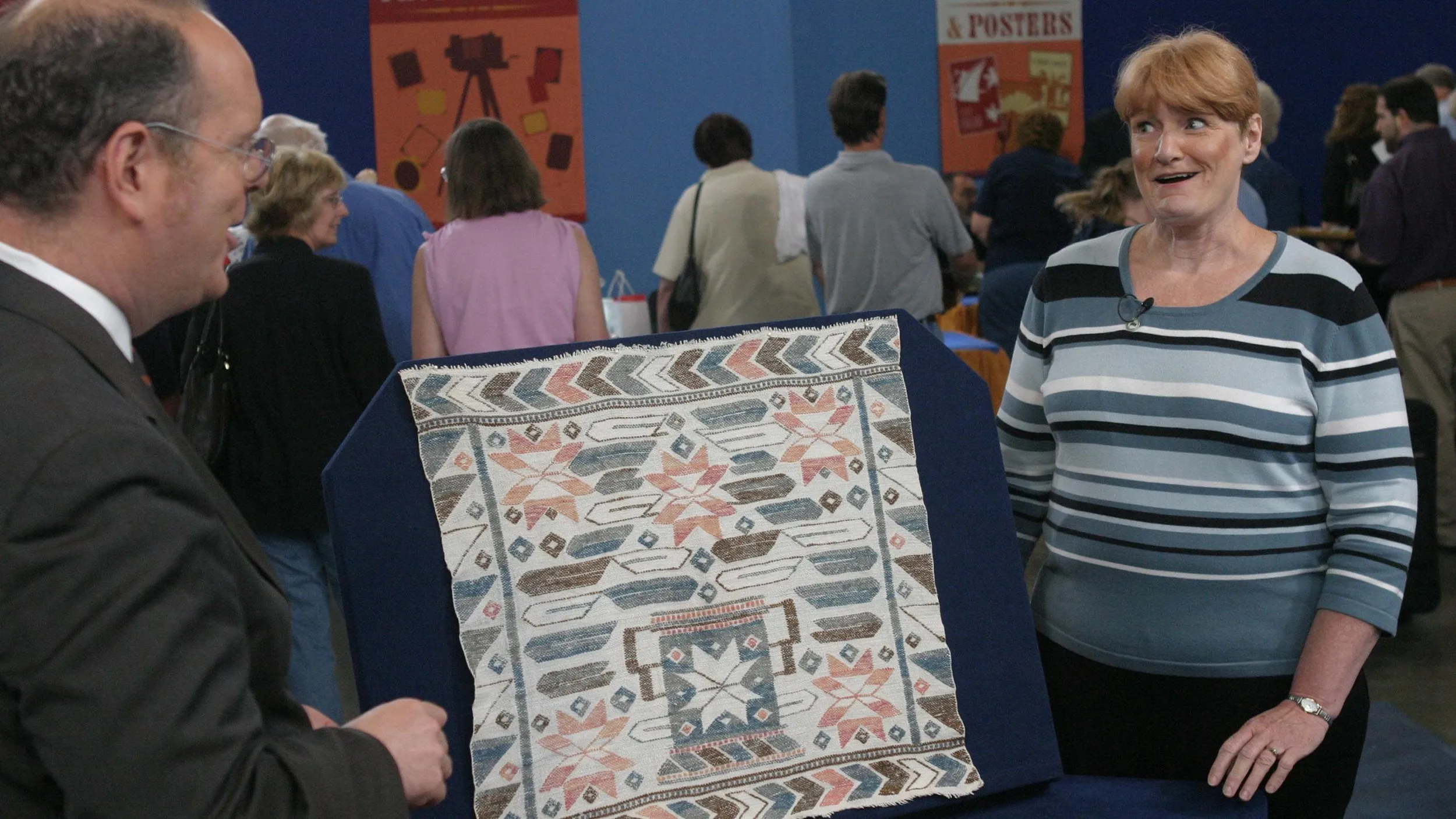GUEST: It was willed to my mother by a relative that she didn't really like very well, who was a career woman in the '30s and '40s, and a registered antique dealer and appraiser. And when Della died, this thing came to the house, and my mother looked at it, and she said, "That's ugly. I don't want it in the house." And I think it was because she didn't like the person who had given it to her.
APPRAISER: Of course.
GUEST: So she had them keep it in the garage. And a week later, an appraisal came with it that was for $5,000, in 1948.
APPRAISER: Okay.
GUEST: And at $5,000, she thought maybe it could find a place in the house.
APPRAISER: When we looked at this yesterday when it was brought in, we couldn't quite figure out where it was made. It's a great mystery. And I've done a lot of research. I stayed up most of the night trying to think about your piece of furniture.
GUEST: Great!
APPRAISER: And I think I've come up with an answer. Now, have you ever looked at the back of this piece of furniture?
GUEST: Um, I don't know if I really have.
APPRAISER: Well, we did some detective work last night, and there are two paper labels on the back. And they have the name "Hearst" on it.
GUEST: Okay.
APPRAISER: Have you ever heard of William Randolph Hearst?
GUEST: Yes, yes.
APPRAISER: Well, he was a great antiques collector and really the founder of the Hearst empire. And at the time of the Depression, he lost most of his money, and his antiques collection was sold at Gimbels department store. And there are two labels on the back of this piece of furniture that say "Gimbel." And as we started to look at it, these shells are inlays. They were probably imported from Great Britain and put on this piece by the cabinetmaker. That was a clue that it probably was made in a coastal town. Then we further looked at it, and as you open the lid here-- this is what's known as a cylinder lid. It resembles what's known as a tambour, which is where each piece, almost like toothpicks, slide back with canvas supports underneath. But this is a faux tambour, because it's all one piece, carved to look like a tambour. And you have the tiger maple interior. But then you pull this board out here. A beautiful bit of cabinetmaking. Now, what kind of wood is this, do you know?
GUEST: I assumed the whole thing was maple.
APPRAISER: This is birch.
GUEST: Okay.
APPRAISER: And birch, the country cabinetmakers called "mountain mahogany," because it would talk a stain that resembled mahogany. Most people today can't tell the difference if it's properly stained.
GUEST: Okay.
APPRAISER: With this, I started to do some research. And there are a couple of advertisements for a cabinetmaker in Saint John, New Brunswick, by the name of Thomas Nisbet. And two advertisements, the first one is that he needed to buy 8,000 to 10,000 feet of birch for his cabinet shop.
GUEST: Okay.
APPRAISER: And the other one said that he had just imported some of the finest mahogany from Jamaica. You have a little bit of Jamaican mahogany here. Now, Nisbet was born in Scotland. He trained as a cabinetmaker, and came to Saint John, New Brunswick, in 1813. Did he bring these inlays with him when he came from Scotland? Because these were certainly not made on this side of the pond.
GUEST: Okay.
APPRAISER: So in my opinion, this piece could certainly be from Saint John, New Brunswick, and one of the finest pieces of cabinetmaking. I am going to give you a figure of $50,000.
GUEST: Oh, that's amazing.











